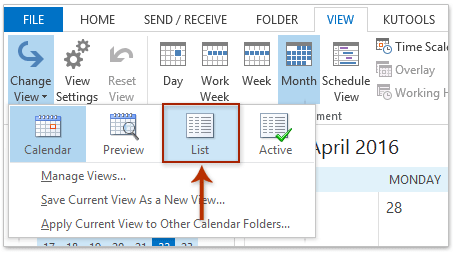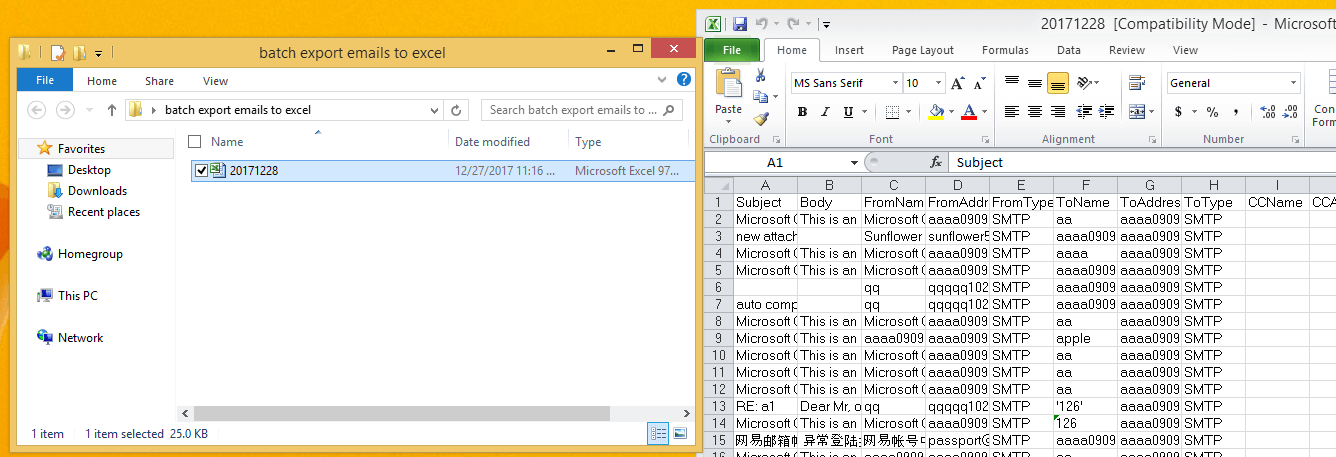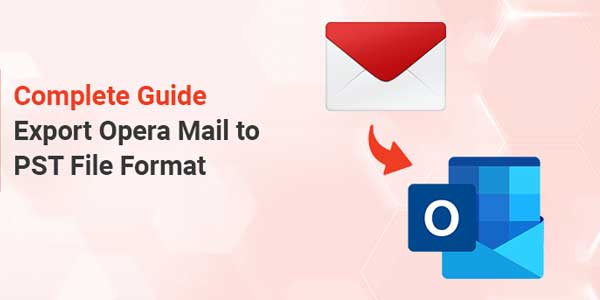The Outlook Export Guide

Welcome to The Outlook Export Guide, your comprehensive resource for understanding and utilizing the export features within Microsoft Outlook. Whether you're a business professional, an email enthusiast, or simply someone looking to streamline your digital communication, this guide will equip you with the knowledge and skills to efficiently manage and export your Outlook data.
In today's fast-paced digital world, effective communication and data management are essential. Outlook, being a powerful email client, offers a wide range of tools and functionalities to help users stay organized and productive. One of its key features is the ability to export various types of data, allowing users to transfer, archive, or analyze their email information effortlessly.
This guide aims to provide an in-depth exploration of Outlook's export capabilities, covering everything from the basics of exporting emails and contacts to more advanced techniques for exporting calendars, tasks, and notes. By the end of this guide, you'll have a thorough understanding of how to harness Outlook's export functions to suit your specific needs.
The Importance of Outlook Export

Exporting data from Outlook serves multiple purposes and is a valuable skill for any Outlook user to master. Whether you're migrating to a new email platform, backing up your data for security purposes, or simply organizing your digital life, the ability to export your Outlook data is a powerful tool.
For businesses, Outlook export can be especially crucial. It enables teams to share and collaborate on important emails, contacts, and calendars seamlessly. Additionally, it provides a means to analyze email data, helping businesses gain insights into customer interactions, marketing campaigns, and more.
For individuals, Outlook export can be a lifesaver. It allows you to easily transfer your email history, contacts, and calendars when changing email providers or devices. It also provides a way to create backups, ensuring your data is safe and accessible even if your primary Outlook account becomes compromised.
Understanding Outlook's Export Functionality

Outlook's export functionality is a powerful tool that allows users to transfer and archive various types of data, including emails, contacts, calendars, tasks, and notes. This section will delve into the specifics of each type of data and how to effectively export them from Outlook.
Exporting Emails
Email export is one of the most commonly used features of Outlook's export functionality. It allows users to save their emails in various formats, making it easy to transfer, archive, or analyze their email data.
To export emails in Outlook, follow these steps:
- Open Outlook and select the File tab.
- Choose Open & Export and then select Import/Export.
- In the Import and Export Wizard, select Export to a file and click Next.
- Select the Outlook Data File (.pst) option and click Next.
- Choose the folder or mailbox you want to export from, and click Next.
- Select the location where you want to save the exported data and provide a name for the file.
- Click Finish to start the export process.
Outlook offers several file formats for email export, including .pst, .msg, .eml, and .txt. Each format has its own advantages and use cases, allowing users to choose the most suitable format for their needs.
Exporting Contacts
Contact export is another crucial aspect of Outlook's functionality. It enables users to transfer and archive their contact information, ensuring easy access and sharing.
To export contacts in Outlook, follow these steps:
- Open Outlook and select the File tab.
- Choose Open & Export and then select Import/Export.
- In the Import and Export Wizard, select Export to a file and click Next.
- Choose the Comma Separated Values (Windows) option and click Next.
- Select the Contacts folder and click Next.
- Select the location where you want to save the exported contacts and provide a name for the file.
- Click Finish to start the export process.
Outlook supports various file formats for contact export, including .csv, .vcf, and .pst. These formats offer flexibility and compatibility with different contact management systems and platforms.
Exporting Calendars
Calendar export is essential for sharing and backing up important events and schedules. Outlook's calendar export feature allows users to save their calendar data in different formats, ensuring compatibility with various calendar applications.
To export calendars in Outlook, follow these steps:
- Open Outlook and select the File tab.
- Choose Open & Export and then select Import/Export.
- In the Import and Export Wizard, select Export to a file and click Next.
- Choose the Comma Separated Values (Windows) option and click Next.
- Select the Calendar folder and click Next.
- Select the location where you want to save the exported calendar and provide a name for the file.
- Click Finish to start the export process.
Outlook offers several file formats for calendar export, including .csv, .ics, and .pst. These formats allow users to easily share and import their calendar data with other calendar applications and platforms.
Exporting Tasks and Notes
Outlook's export functionality also extends to tasks and notes, enabling users to transfer and archive their task lists and notes efficiently.
To export tasks in Outlook, follow these steps:
- Open Outlook and select the File tab.
- Choose Open & Export and then select Import/Export.
- In the Import and Export Wizard, select Export to a file and click Next.
- Choose the Comma Separated Values (Windows) option and click Next.
- Select the Tasks folder and click Next.
- Select the location where you want to save the exported tasks and provide a name for the file.
- Click Finish to start the export process.
Similarly, to export notes in Outlook, follow these steps:
- Open Outlook and select the File tab.
- Choose Open & Export and then select Import/Export.
- In the Import and Export Wizard, select Export to a file and click Next.
- Choose the Comma Separated Values (Windows) option and click Next.
- Select the Notes folder and click Next.
- Select the location where you want to save the exported notes and provide a name for the file.
- Click Finish to start the export process.
Outlook supports the .csv and .txt formats for exporting tasks and notes, providing flexibility and compatibility with various note-taking and task management applications.
Advanced Outlook Export Techniques
While the basic export functionality in Outlook is straightforward and user-friendly, there are advanced techniques and tools that can enhance the efficiency and customization of your export processes.
Using Outlook's Advanced Export Settings
Outlook offers advanced export settings that provide users with more control over the export process. These settings allow for customization of the exported data, ensuring that only the desired information is included.
To access the advanced export settings in Outlook, follow these steps:
- Open Outlook and select the File tab.
- Choose Open & Export and then select Import/Export.
- In the Import and Export Wizard, select Export to a file and click Next.
- Choose the desired export format and click Next.
- Select the folder or mailbox you want to export from, and click Next.
- Click on the Options button to access the advanced export settings.
Within the advanced export settings, users can specify the level of detail included in the exported data, choose the date range for the export, and even map Outlook fields to the target file format.
Utilizing Third-Party Export Tools
While Outlook's built-in export functionality is robust, third-party export tools can offer additional features and customization options. These tools often provide more advanced filtering and formatting capabilities, making them ideal for complex export tasks.
Some popular third-party export tools for Outlook include:
- Mail Extractor Pro: This tool specializes in exporting Outlook data to various formats, including .mbox, .eml, .msg, and .pst. It offers advanced filtering options and supports bulk exports.
- Outlook Export Wizard: A user-friendly tool that allows users to export Outlook data to .csv, .txt, .xml, and .html formats. It provides a simple interface for selecting specific data for export.
- PST Converter Pro: Focused on converting and exporting Outlook data to different formats, this tool supports a wide range of file types, including .pdf, .doc, .html, and .rtf.
These third-party tools can be particularly useful when dealing with large volumes of data, complex export requirements, or when exporting to less common file formats.
Best Practices for Outlook Export
To ensure a smooth and successful Outlook export process, it's essential to follow best practices. These practices not only optimize the efficiency of the export but also help maintain data integrity and security.
Backup Before Exporting
Before initiating any export process, it's highly recommended to create a backup of your Outlook data. This backup serves as a safety net, ensuring that your original data remains intact even if something goes wrong during the export.
Choose the Right File Format
Selecting the appropriate file format for your export is crucial. Different file formats have varying levels of compatibility and functionality. For instance, the .pst format is ideal for archiving and transferring Outlook data, while the .csv format is more suitable for importing data into other applications.
Consider File Size and Complexity
The size and complexity of your Outlook data can impact the export process. Large volumes of data or complex folder structures may require more time and resources to export. It's important to plan and manage expectations accordingly.
Verify Data Integrity
After exporting your Outlook data, it's crucial to verify the integrity of the exported files. Check if all the desired information is present and accurate. This step ensures that your exported data is reliable and can be used as intended.
Securely Store Exported Data
Once you've successfully exported your Outlook data, ensure that you store it securely. Consider using encrypted storage solutions or backing up the exported files to multiple locations to prevent data loss.
Outlook Export for Business and Collaboration

Outlook's export functionality is especially valuable in a business context, where collaboration and data sharing are essential. By effectively exporting Outlook data, businesses can streamline their communication and operations, leading to increased productivity and efficiency.
Sharing Outlook Data with Team Members
Exporting Outlook data allows team members to easily access and work with shared information. Whether it's a contact list, a calendar of events, or a set of important emails, exporting this data ensures that everyone has the necessary information to collaborate effectively.
Archiving and Backing Up Business Data
For businesses, archiving and backing up data is crucial for regulatory compliance and data security. Outlook's export functionality provides a straightforward way to archive important emails, contacts, and calendars, ensuring that business-critical information is safely stored and accessible when needed.
Analyzing Business Email Data
Outlook's export feature also opens up opportunities for businesses to analyze their email data. By exporting email data to formats like .csv, businesses can import this data into analytics tools, gaining valuable insights into customer interactions, email campaign performance, and more.
Outlook Export for Personal Use
Outlook export is not limited to business applications; it's equally valuable for personal use. Whether you're switching email providers, changing devices, or simply wanting to organize your digital life, Outlook's export functionality can be a powerful tool.
Migrating to a New Email Provider
When transitioning to a new email provider, Outlook's export feature simplifies the migration process. By exporting your emails, contacts, and calendars, you can easily import this data into your new email account, ensuring a seamless transition without losing any important information.
Backing Up Personal Data
Personal data, such as emails, contacts, and calendars, is often irreplaceable. Outlook's export feature allows individuals to create backups of this data, providing peace of mind and ensuring that personal information is safe and accessible even in the event of device loss or account compromise.
Organizing Personal Email Archives
Outlook's export functionality can help individuals organize and archive their email history. By exporting emails to a format like .pst, users can easily access and search through their archived emails, making it convenient to find and retrieve important messages from the past.
Future Outlook Export Innovations
As technology advances, Outlook's export functionality is likely to evolve and improve. Here are some potential future innovations and enhancements that could further enhance Outlook's export capabilities:
- Enhanced Export Automation: Outlook could introduce more sophisticated automation tools for exporting data, allowing users to schedule and automate export processes based on specific criteria or triggers.
- AI-Assisted Export Filtering: Artificial intelligence could be leveraged to analyze and filter exported data based on user preferences or contextual cues, making the export process even more efficient and accurate.
- Cloud-Based Export and Collaboration: Outlook's export functionality could integrate more closely with cloud-based services, allowing for seamless export and collaboration across different platforms and devices.
- Advanced Data Visualization: Outlook could introduce visual representations of exported data, such as charts and graphs, providing users with a more intuitive way to analyze and understand their exported information.
As Outlook continues to evolve, its export functionality is likely to become even more powerful and user-friendly, making it an indispensable tool for both personal and professional email management.
Frequently Asked Questions
How do I export multiple Outlook folders at once?
+To export multiple Outlook folders simultaneously, you can use a third-party tool like Mail Extractor Pro or Outlook Export Wizard. These tools allow you to select multiple folders for export, making the process more efficient.
<div class="faq-



